Kendo Armor
Kendo armor or Bogu consists of four pieces: the helmet (men), the body protector (doh), the gloves (kote), and the hip and groin protector (tare).

|
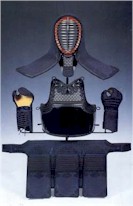 |
When viewed side by side it is easy to see how modern Kendo armor design is fashioned after the Oyoroi of the Samurai.
|
In this first installment we will look at the Men, Doh, and Tare.
Materials
What are the materials of kendo armor? Modern and traditional materials are used in the making of armor. These include but are not limited to: bamboo, leather, animal hair, metal, plastic, and cloth.
Stitching
Kendo armor is sewn in one of two ways, hand, machine or a combination of both. Most of the sets you will see are machine stitched. Hand stitching is very labor intensive and expensive. Because of this most kendoists do not use handmade bogu for everyday practice, but instead save them for special occasions.
Quality of stitching.
Machine stitching is measured in millimeters between rows of stitches. This space generally ranges from 8 mm to 2.5 mm. Hand stitching is measured in the Japanese system of bu and sun. 2 bu is about equal to 6 mm. Handmade armor stitching is measured as 2, 1.5, 1.2 and 1 bu. 1.5 would be 1 bu 5 sun.
Men
The Men is the only thing which comes between the head and the shinai. It is a very important piece of equipment, as you can imagine. The two major components of the men are the menbuton, the long piece of padding and the mengane, the metal grill. The menbuton like the other pieces is a combination of materials. Sewn inside it may be padding made of felt, cotton, and/or wool. The edges are bound with leather and along the front edge there may also be decorative stitching/braiding. It is all stitched together by hand or machine. The menbuton provides more than adequate protection against correct kendo strikes. There are even men and kote available with sorbothane, and at the high-end titanium strips are embedded.
The face liner and throat protectors are attached to the mengane then the menbuton is attached by sewing and leather lacing.
Mengane
The mengane is typically one of two materials: Titanium or Duralumin, a lightweight aluminum alloy that contains copper, magnesium, and manganese. The old mengane were a nickel-iron alloy that was quite heavy. Duralumin mengane are quite light, but will bend under repeated missed strikes. Titanium has nearly the strength of steel but half the weight. There are also mengane that are both duralumin and titanium. On these the upper bars (where the striking occurs) are titanium while the rest is duralumin. For those who want to go hi-tech there are even titanium mengane designed with the center of gravity shifted upwards and inwards towards the face. Ceramic mengane are also available. What you choose is a matter of preference, quality and price.
Doh
The two major pieces of the doh are the mune, the decorative leather top and the doh-dai, the hard shell. Traditional material for the doh-dai is bamboo. The fiber doh was introduced in the 1960's by a paper company. The fiber doh is often thought of as fiberglass, but it isn't. It is a type of Japanese paper mache that is very dense and durable. Plastic/nylon dohs are also now available as a less expensive alternative to the bamboo doh.
Modern bamboo doh have 43 to 64 staves. Doh of 80 and 120 staves have been made as well. The staves are cut, shaped and then put together with cords through the side of the staves and tied off at the back edge. Leather is then glued over the bamboo, the holes drilled, and then sent off to be lacquered. Old style doh were staves of bamboo strung together with leather cord.
Here are some pictures of the doh being made.
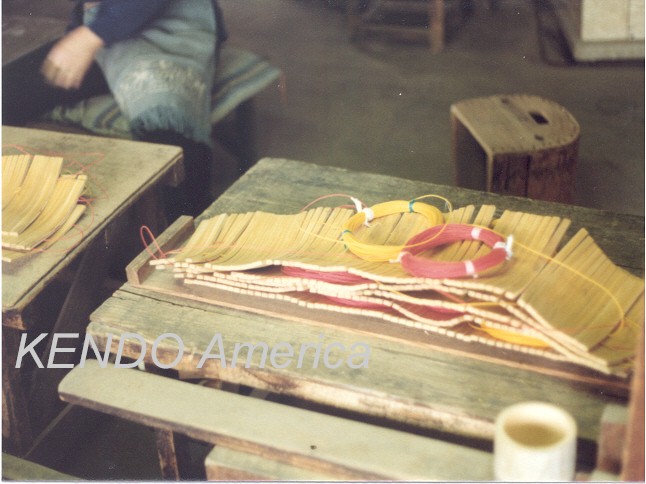 |
Bamboo staves being assembled with cord. |
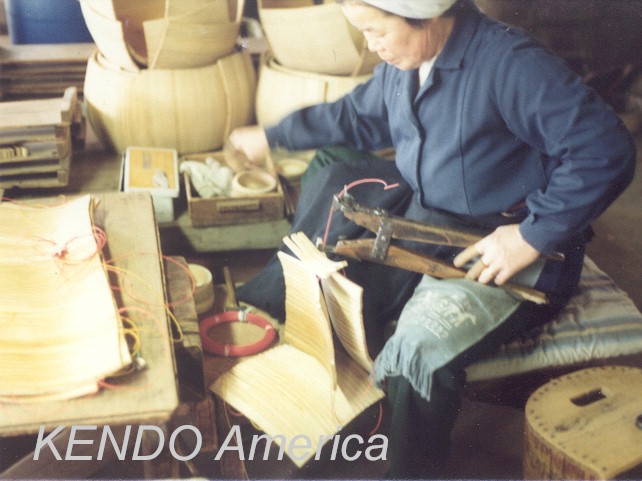 |
The cord being tightened up to form the doh. |
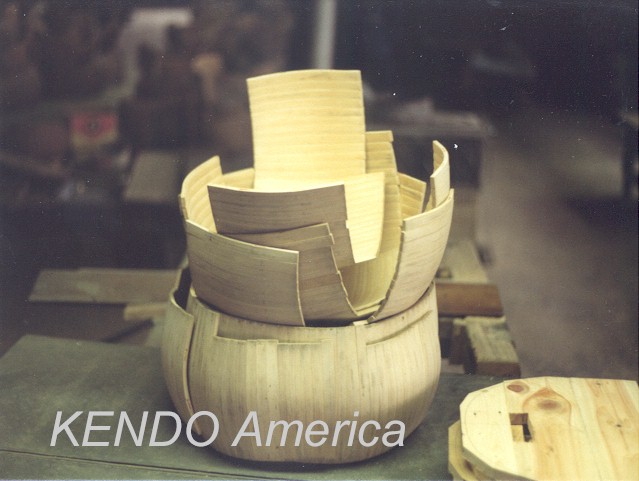 |
A stack of doh prior to having the leather glued on. |
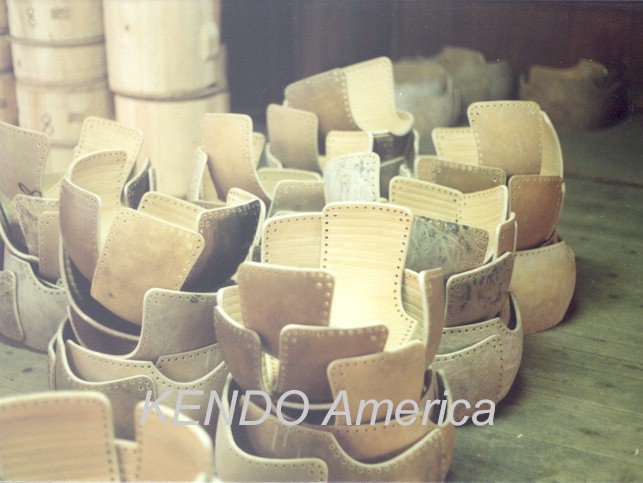 |
A stack of doh with the leather glued on and drilled. |
Tare
The tare is the one piece of armor that is probably the least paid attention to. It is hardly noticeable except for the fact that the nafuda has a Kendoist's name on it. It has the important role of protecting your hips acting in concert with the doh. Like the menbuton it is constructed of layers of padding, cloth, and leather. It has 6 major pieces, the haraobi (belt), 3 ohdare (large flap), and 2 kodare (small flap). The wakihimo (tying cords) attach to the haraobi. Tare range from the very plain to highly decorated.
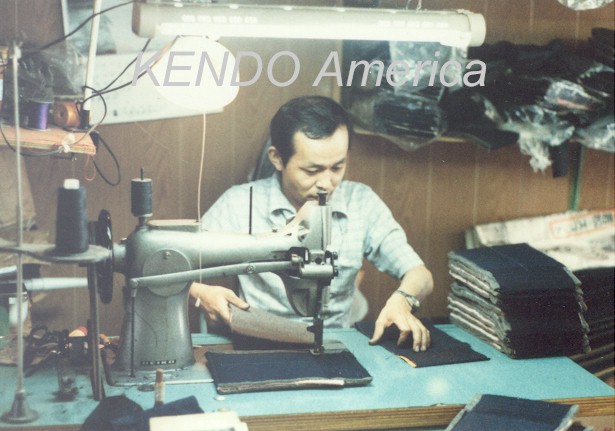 |
Tare pieces being sewn. |

